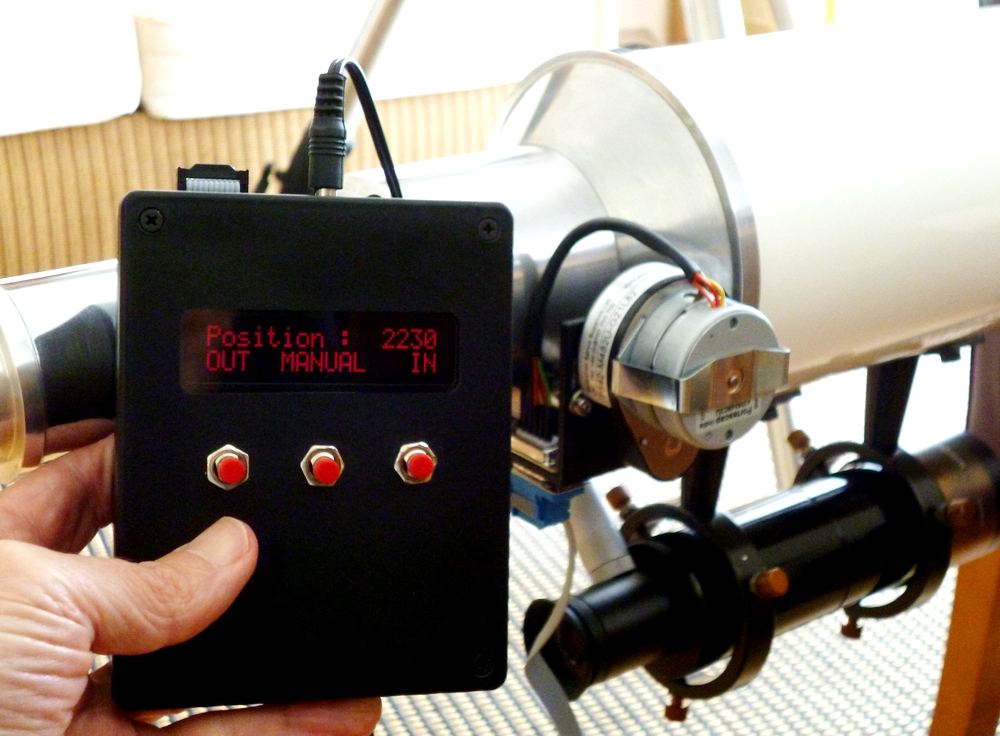AE Luton f14.5 Refractor
I picked this up from Astronomy Buy & Sell.The scope and mount were made by AE Luton sometime around 1970.
The previous owner has had the scope tube resprayed and it is in excellent condition.
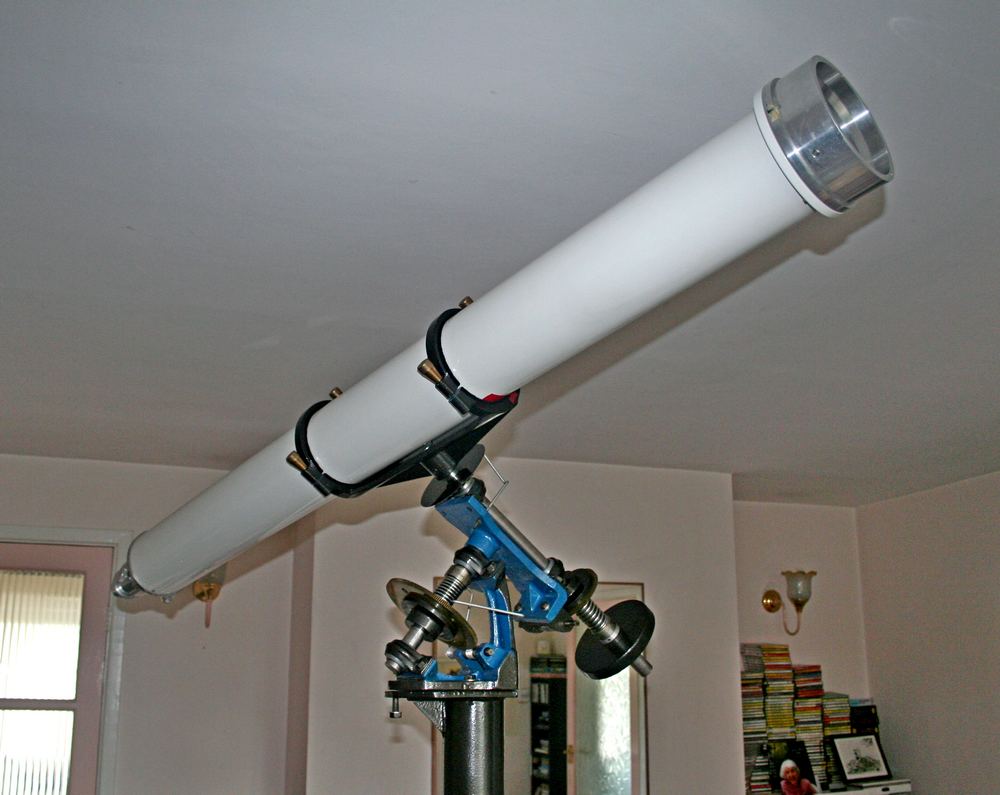
The business end of the scope. The lens is perfect with no mottling that can often be seen on 'old' lenses.
The inside of the tube needs to be 'flocked' as it is far from being matt black - it look like some of the white spray paint has gone inside the tube.
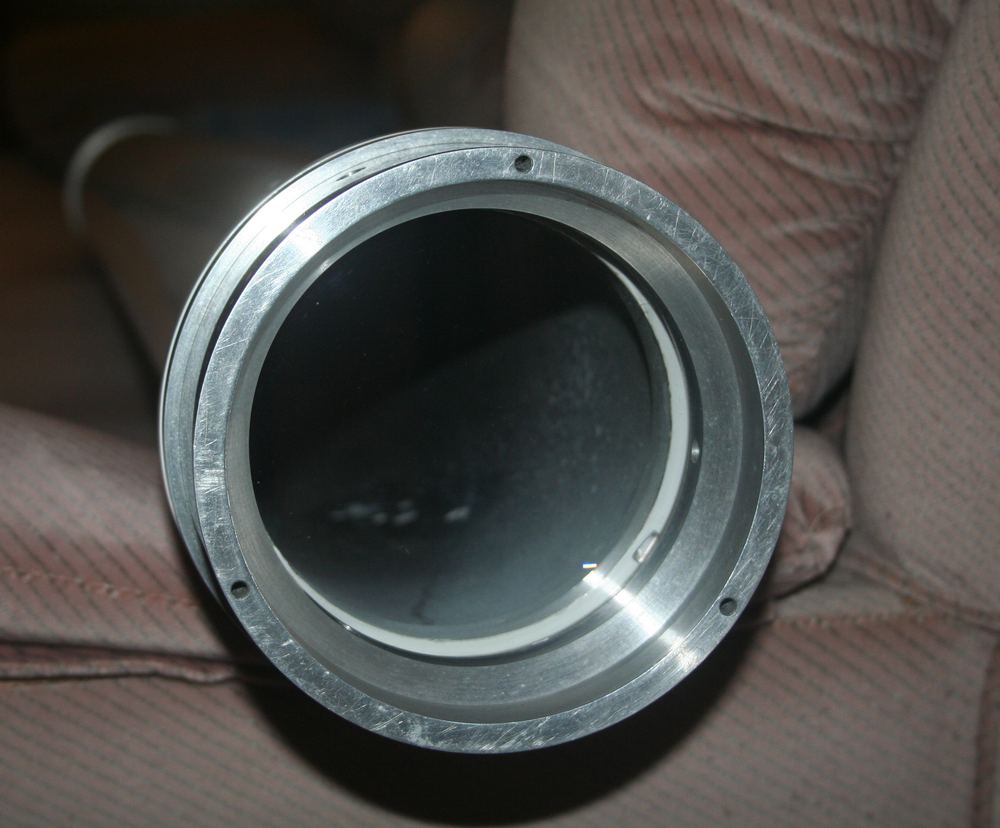
The lens in its cell. A rubber 'O' ring makes a resilient seal between the cell and the tube.
Three screws attach the cell to the tube and allow collimation, and three grub screws provide locking so that once collimated the cell should stay put.

| The pier is very tall - the front of the
telescope will be about 9 feet high when looking upwards. |
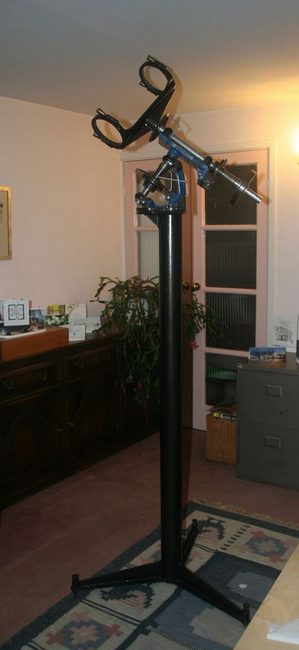 |
The mount is built very solidly. It has friction plates which the large springs press against, acting as clutches.
Very little force is needed to move the scope around the sky, and when you stop pushing the worm wheels hold the position.
No levers or knobs to fiddle with!

Sturdy rings hold the scope to the mount.
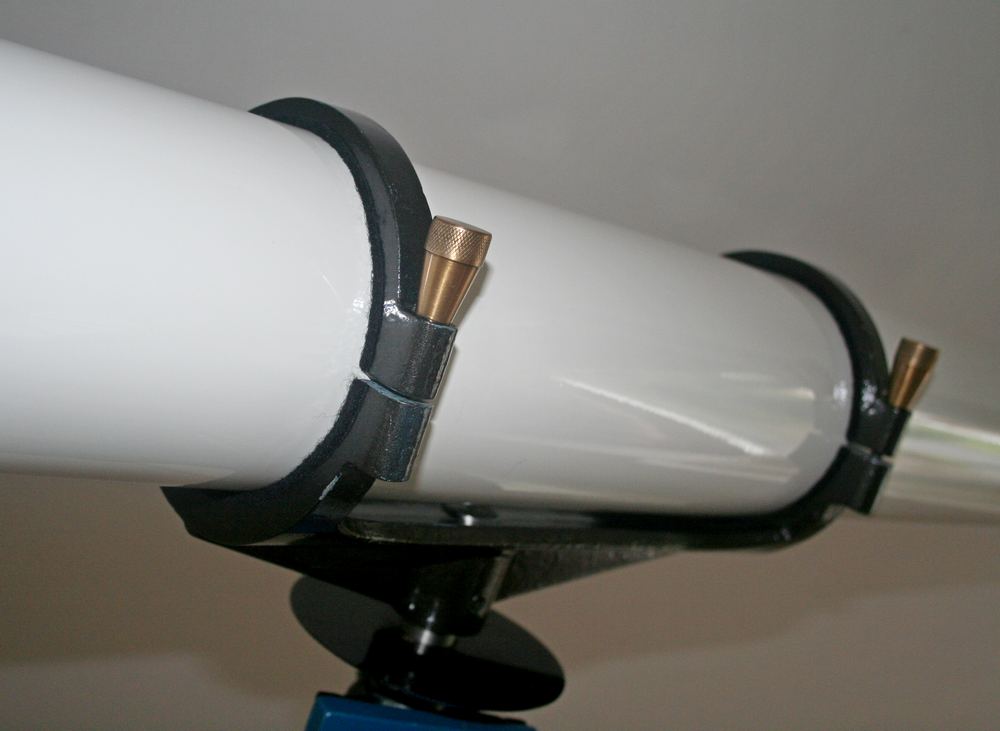
The focuser. Adjusting screws can alter the tension on the worm to stop slipping.
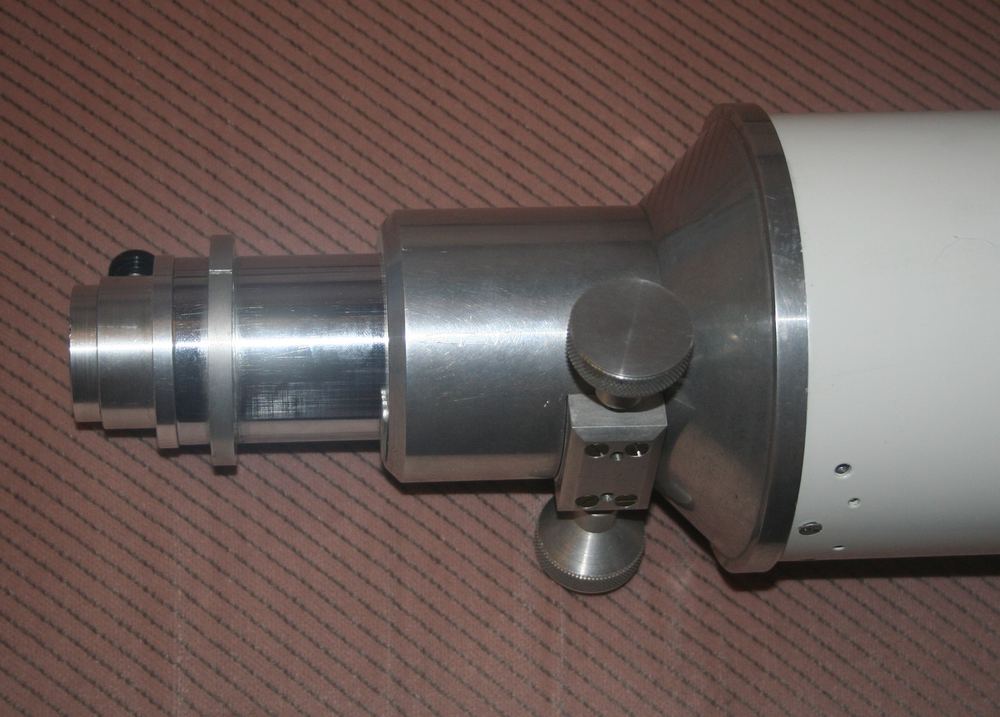
I have bought these stepper motors to provide an RA drive, and DEC adjustment.
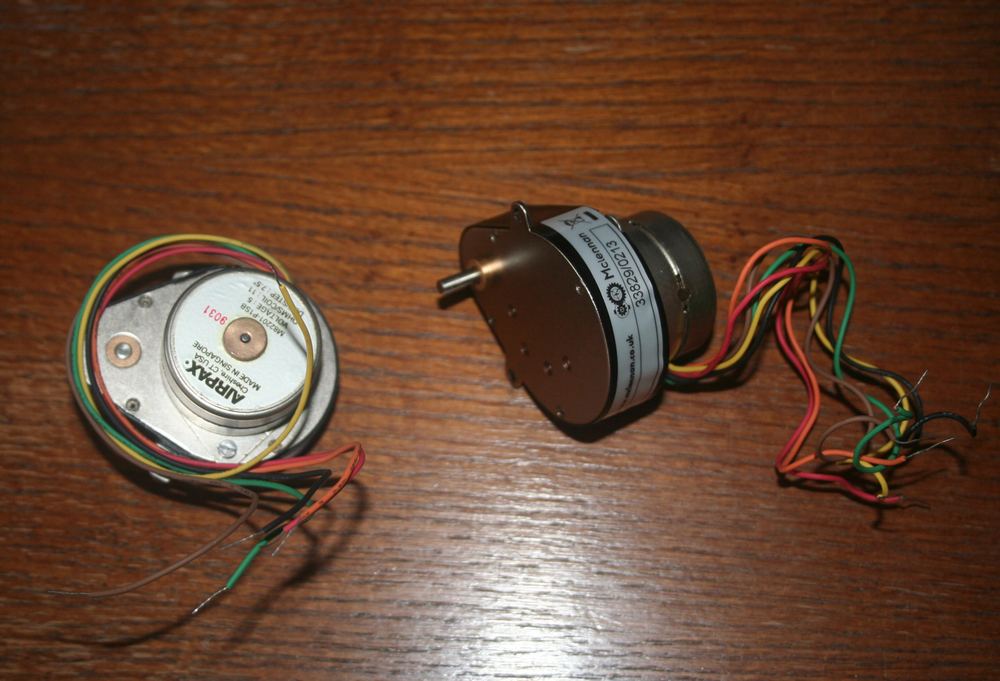
The lens seems to be good. At f14.5 chromatic aberration should be minimal.
This image using a Canon 350D shows a number plate about 150 yards away.
(With a 16mm eyepiece the smallest writing below the registration number is quite legible.)

| On dismantling the tube I found that the
internal light baffles were damaged. The ring nearest the lens had half
missing. The first thing to do now is rebuild the baffles. |
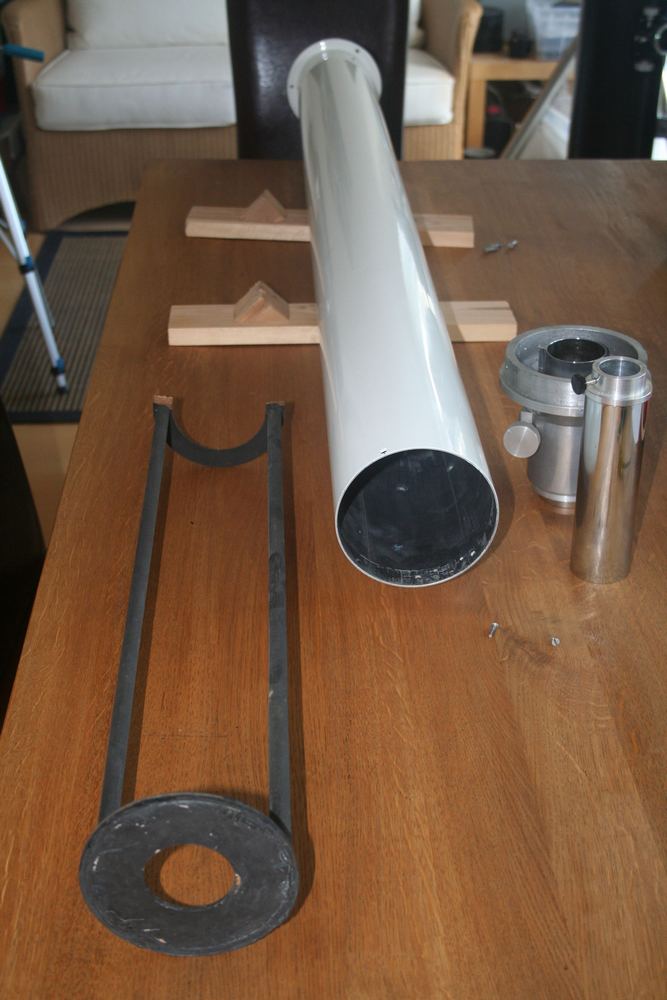 |
I used this website to determine effective baffle sizes and positions.
I planned on an unobstructed field of 20mm diameter, which should be ample for any planets, and also sufficient for the Moon.
The new position for the baffles are shown by red arrows, the old are in blue.

I decided on balsa wood for the construction - easy to work with and very light.
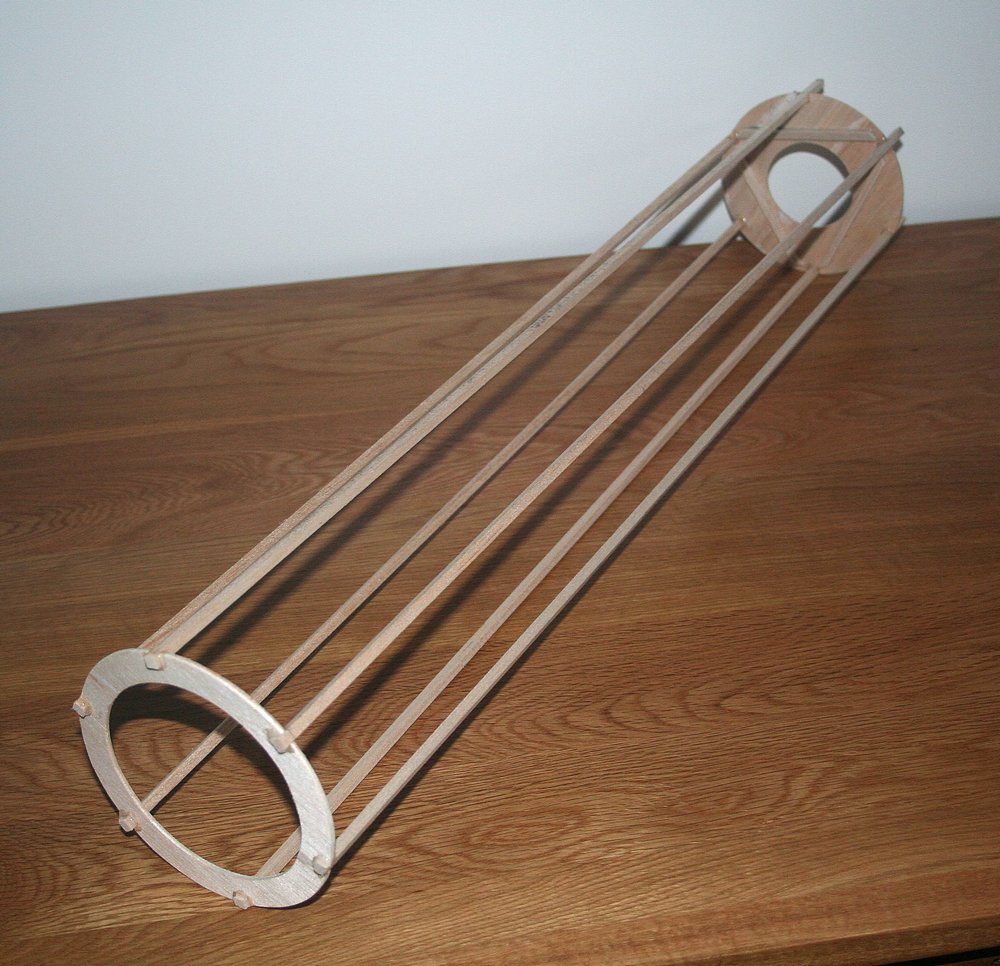
Some strengthening struts added and painted matt black (chalkboard paint).
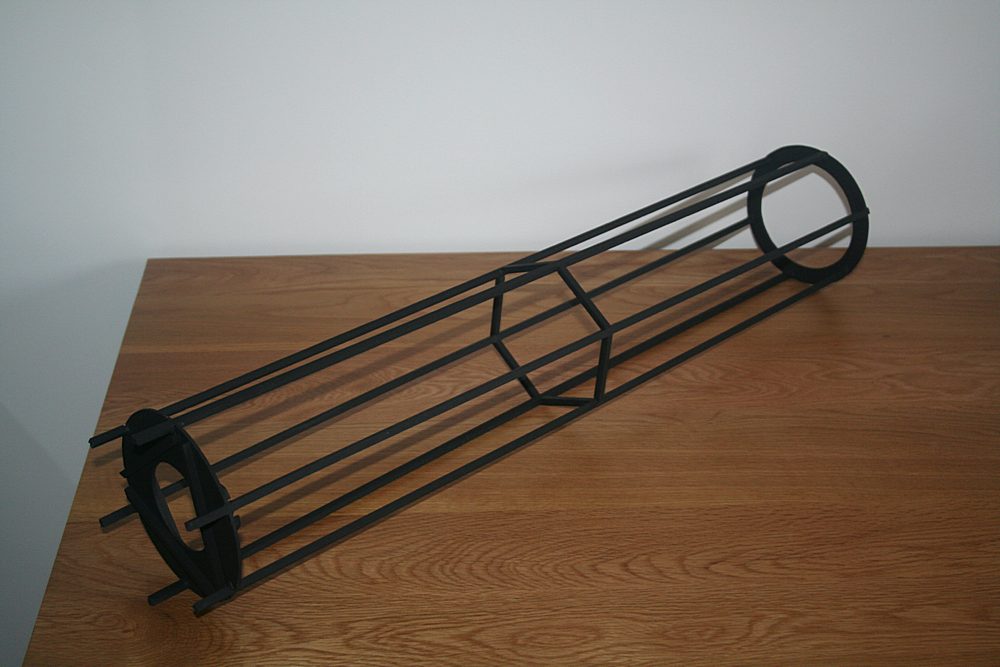
Flocking material wrapped around the balsa. This makes a snug fit and the baffles can be slid into the tube to the correct position.
More flocking is placed on either side of the baffles which will hold everything securely.
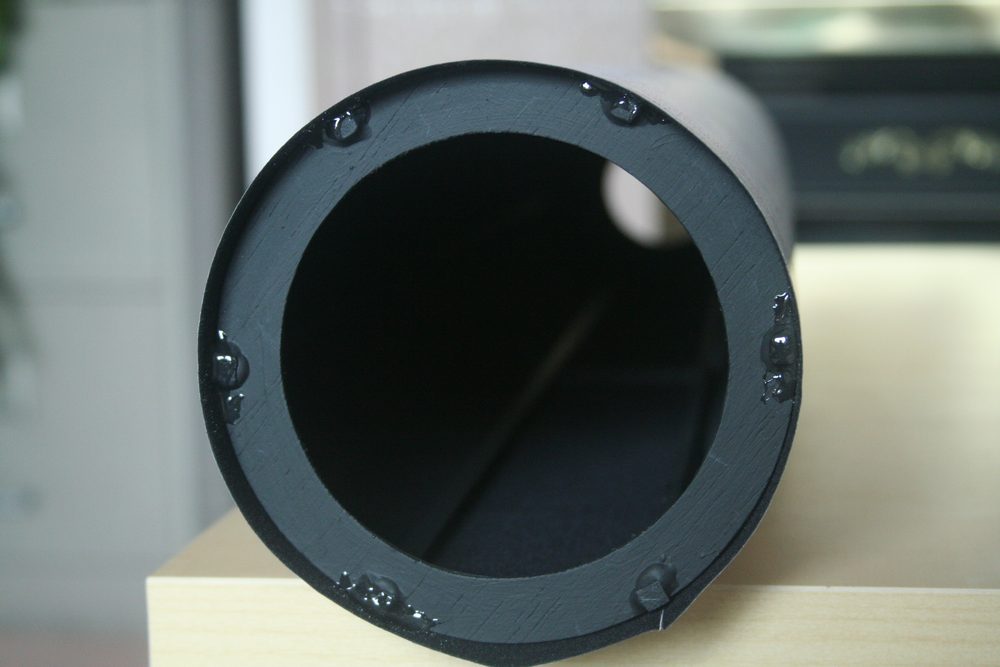
The front of the tube with all flocking and baffles in place. It looks reassuringly black in there!
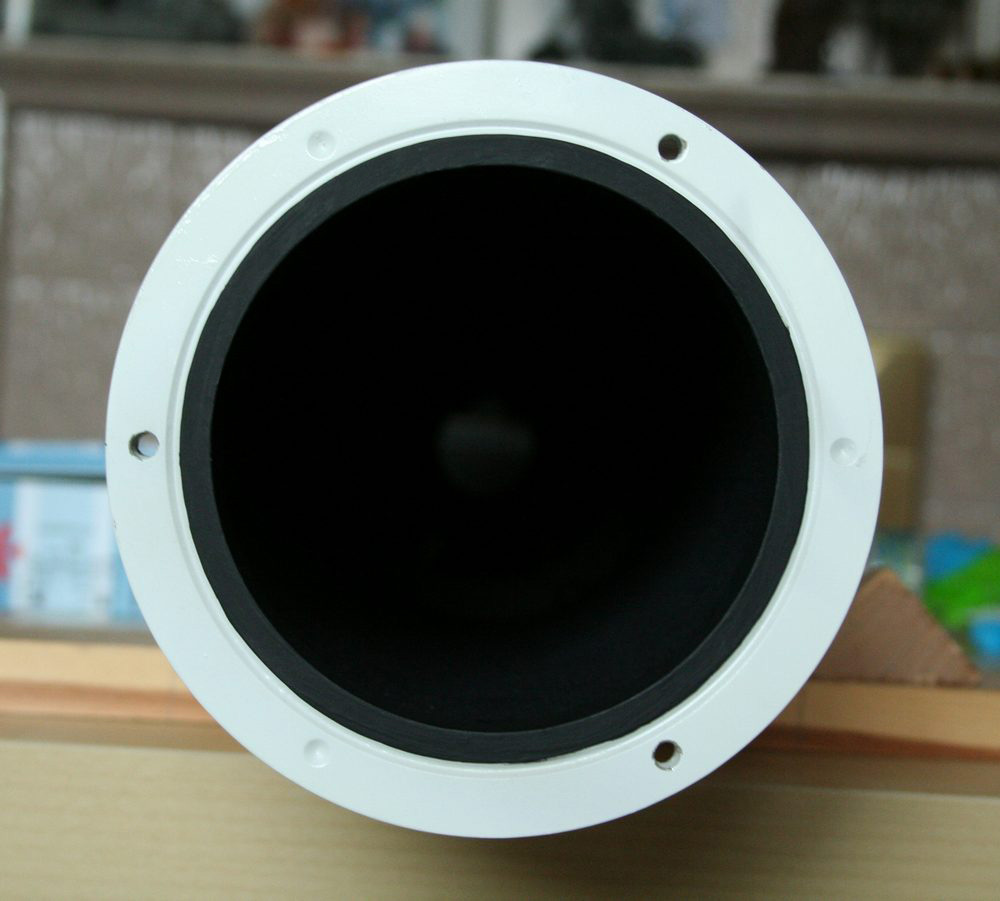
View from the rear with a flash from the camera to show the rear baffle.
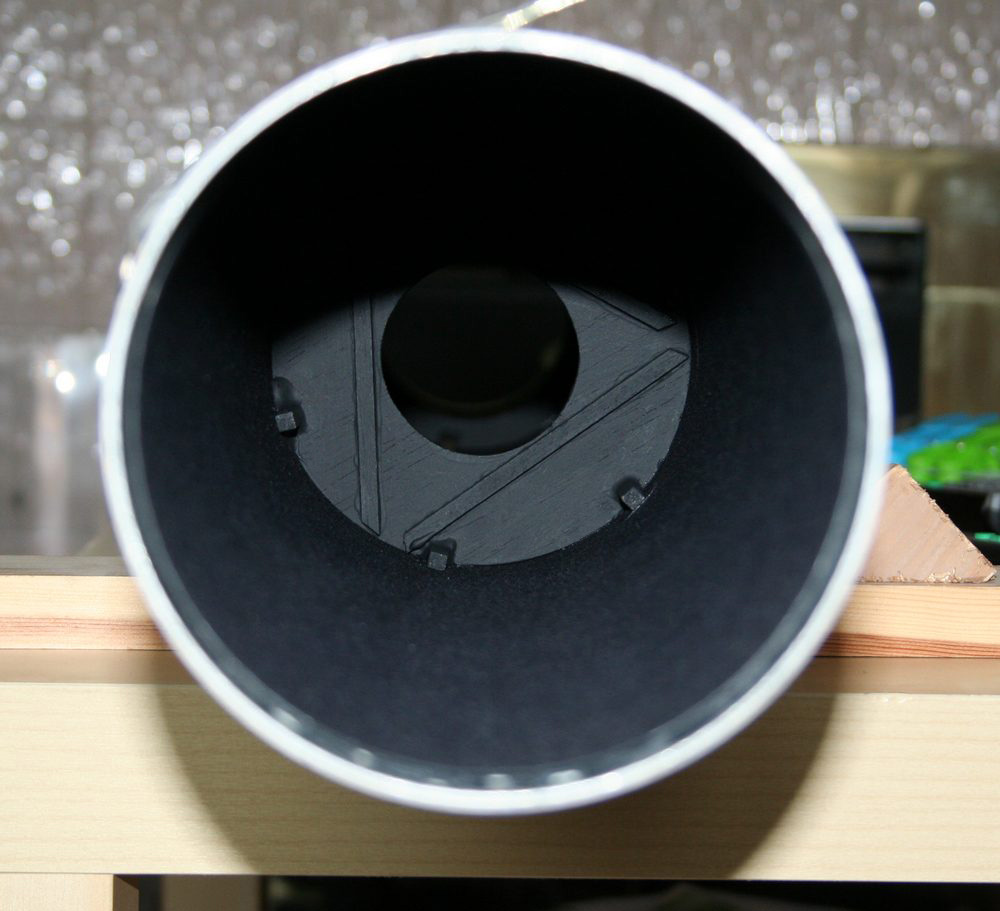
Looking into the tube through the lens. Much improved.
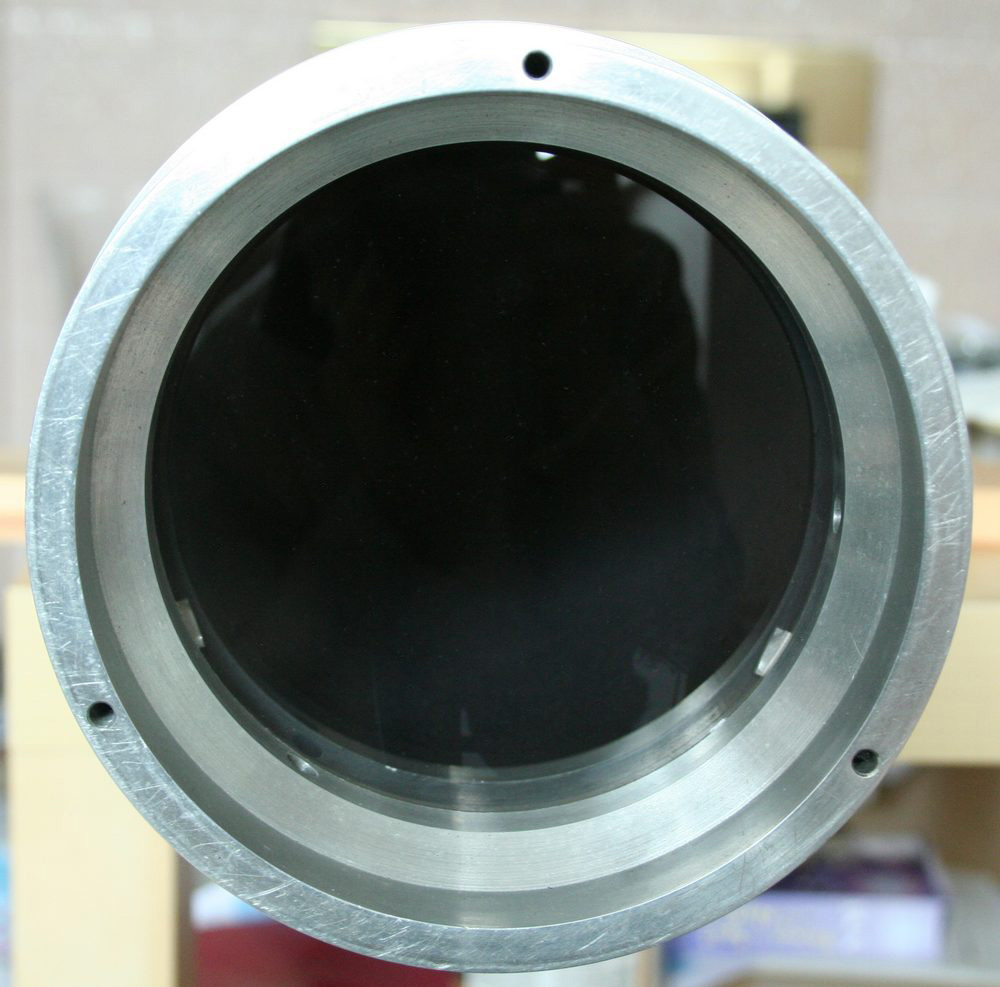
The brackets to connect the motors to the worm shafts are now complete.
I now have to get started on the electronics to drive the motors.

The Observatory is out of action and there is a clear spell of weather, so I have set
the refractor up on the patio ready to have a look at Saturn tonight.
The drive motors are not ready yet, but it will be interesting to see what Saturn looks like.

While waiting for the skies to darken I took a few images of the church steeple with the Canon 350D.
This is the best 20 frames of 100, at 1/500th second.
A single frame at left, stacked image at right (with Registax).

For comparison, 18mm lens at left, 55mm lens centre, AE refractor at right (about 1600mm)

Saturn looked very good. With a 2.5x Powermate magnification was 200x.
No troublesome false colour. Cassini division easily seen as a thin black line.
Quite a bit of detail on the planet surface seen.
The Double-Double in Lyra was easily resolved at 200x, and each star had a neat diffraction ring around it.
Vega looked dazzling, with several diffraction rings around it. In fact, all the brighter stars had clear diffraction
rings, something I am not used to seeing with my reflectors.
| To aid in balancing the DEC axis there is a
long brass rod with counterweight. This is now fitted. I have also attached the finderscope rings. Some adjustment is needed to them because the conical pillars that support the rings are not perpendicular to the fixing brackets. |
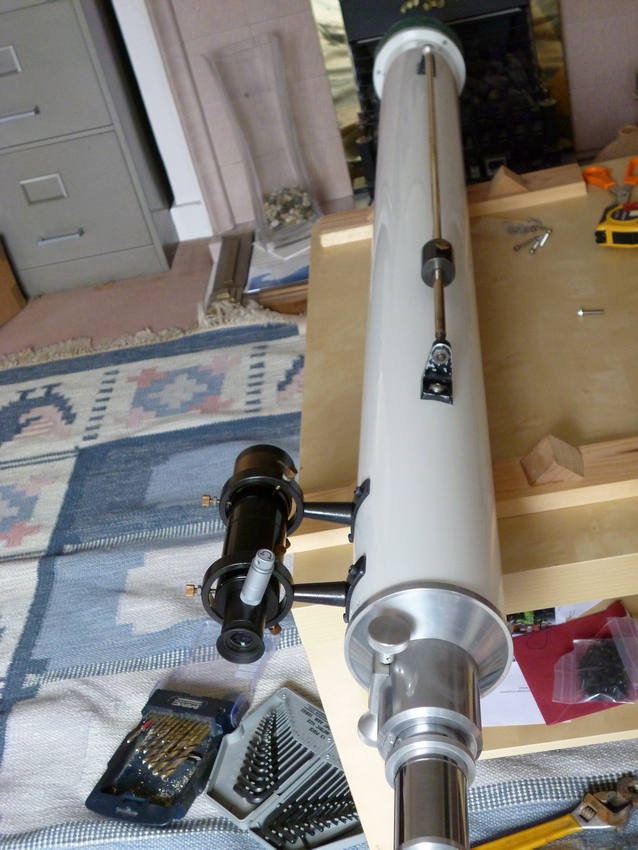 |
I was impatient waiting to get the stepper motor drive built so I bought some 5" tube rings
from eBay so that the refractor can be driven by my old EQ6 mount

| At the first oportunity I used the toucam
pro webcam to make a mosaic of the Moon. Sky quality was very poor but
the result was quite pleasing. Mare Humorum--> Schiller is the elongated crater--> |
 |
||
| June 27th The work on the stepper motor driver has begun. To test the motor speed a sharpened matchstick rotates past a line on a small piece of paper. For sidereal speed, the motor should rotate once in 897.54 seconds. After fine tuning the software one turn is averaging at 897.70 seconds. Should be good enough. |
 |
||
| July 11th Push buttons in the black handset and motors connected with plugs - nearly complete. |
 |
||
| All hooked up, and it seems to work! The scope needs to be carefully balanced so that the motors do not have to strain to turn. Adjustment slewing speed is only about 8x sidereal, but it seems adequate. Now we wait for the stars to appear to check on the RA sidereal speed. (The control box is presently taped to the pier. I will need to make something a bit more professional). |
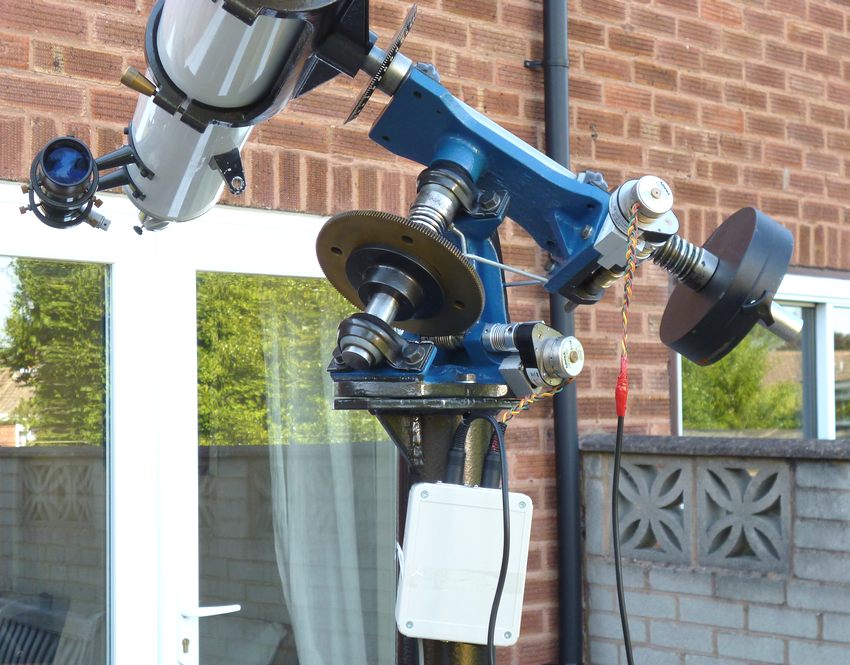 |
||
| All seems to work well. The RA sidereal speed appears to be accurate, and the slewing speeds are suitable for moving the target to the centre of the screen. This video shows the star Vega. I moved the star around the screen to test slewing and then let the mount track for a couple of minutes. |
18th July
Crater Copernicus with the Toucam Pro.
2 minute video, processed with Registax.

Mosaics of the Moon
Very little false colour on the bright parts of the Moon.
The refractor is doing well!
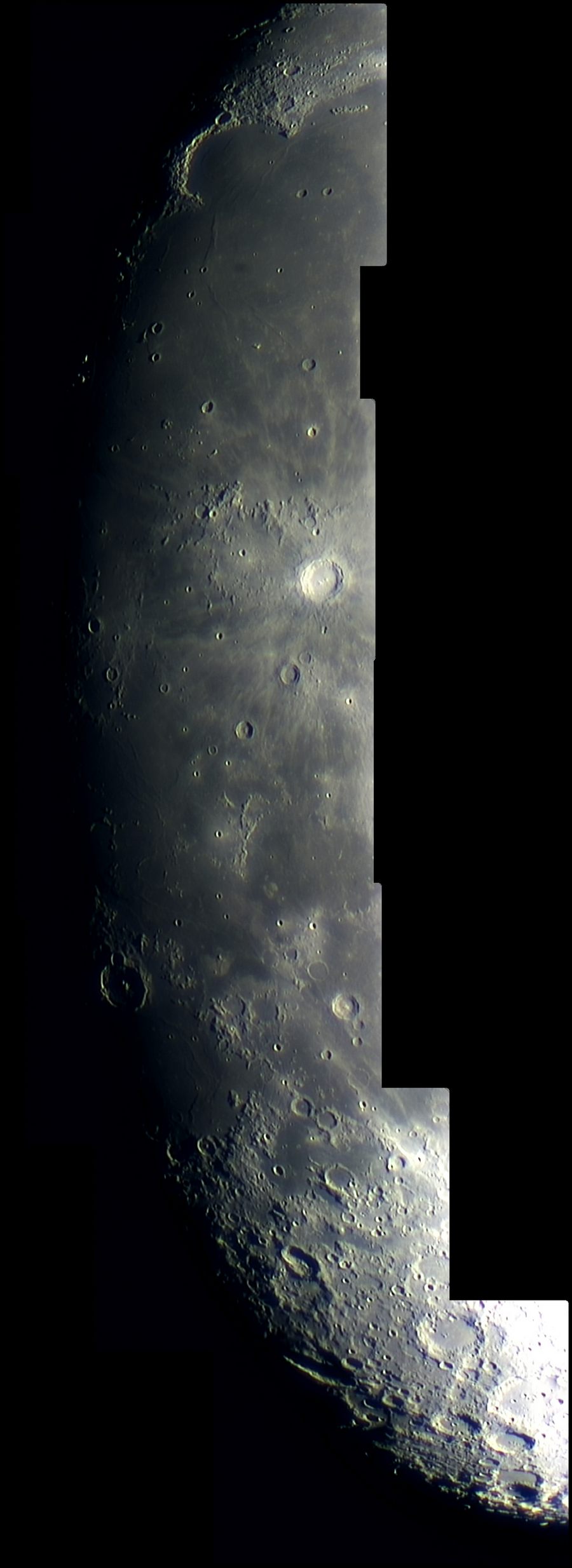
19th July
Mosaics made with images taken by the Microsoft Lifecam.
Very small pixel size and larger area gives greater coverage than the Toucam.
I adjusted the speed of the RA drive motor to give Lunar tracking speed which is slower than sidereal.
The first try was a bit too slow, so some adjustment is still needed.

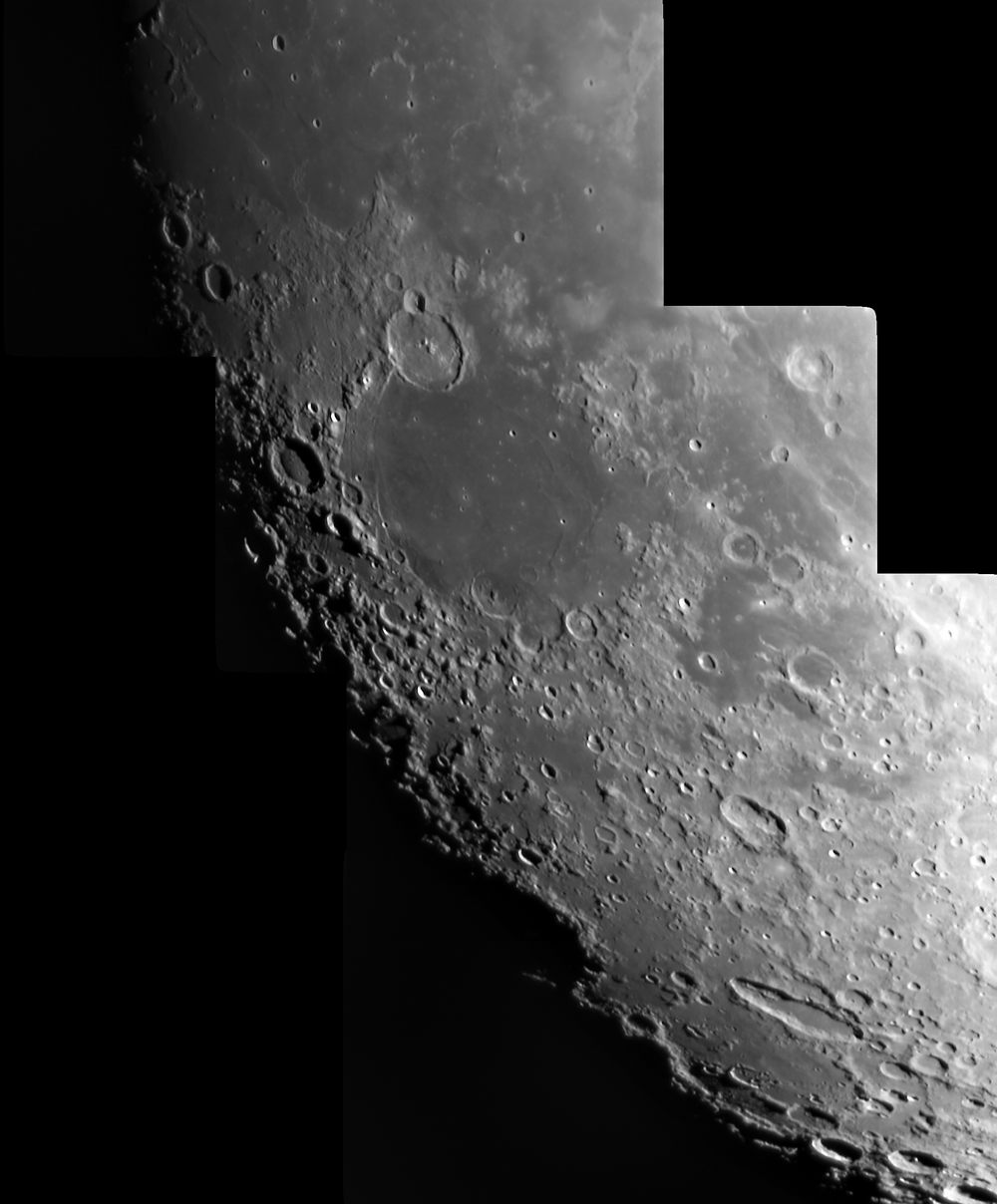
March 2014
The first attempt at planetary imaging with the AE refractor.
Microsoft Lifecam used as the webcam, processed in Registax and Photoshop.
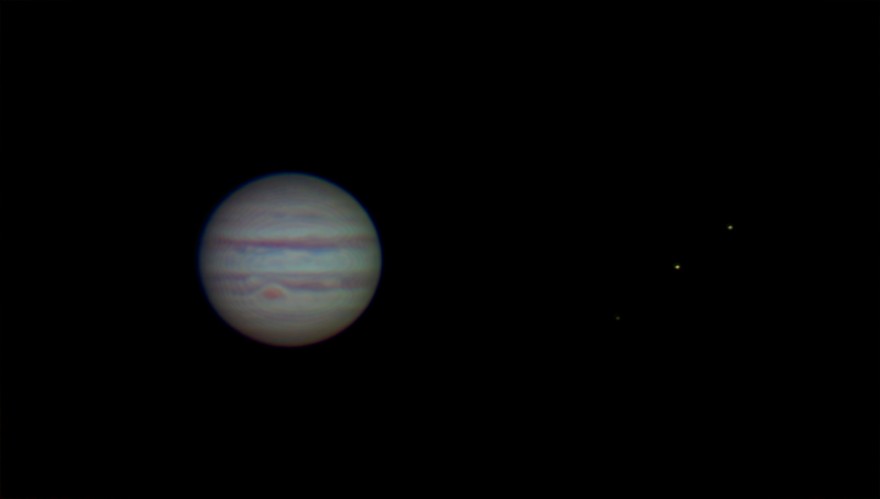
The biggest obstacle was focussing. The slightest touch on the focuser wobbled the image so much that
it was very difficult to get good focus.
Solution: I am getting a Lakeside stepper motor focus controller.
April 24th
I sent the rear end of the telescope direct to Lakeside Astro.
Peter did a superb job of fitting the stepper motor focuser by constructing a custom made adapter plate.

First test: 12V DC power supply connected. For 1000 steps of the focuser the focus tube moves 0.182 inches.
This is 4.6 microns per step which should allow the critical focus to be achieved.
(An f/14.5 telescope has a critical focus of hundreds of microns).
The centre button of the controller sets the mode.
When in 'Manual' the IN and OUT buttons will single step the focuser. Keeping a button pressed will ramp up the speed.
It all works splendidly.
